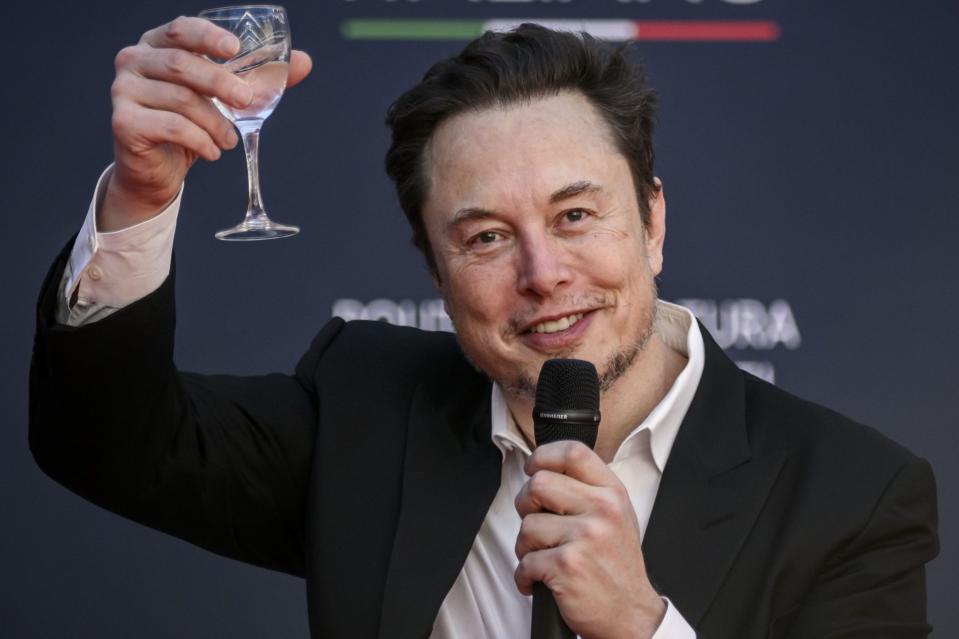America’s 4 largest car makers all pass on the Super Bowl for the first time in 23 years — and the race to catch Elon Musk could be to blame

For the first time in 23 years, none of America’s four largest automakers will air national Super Bowl ads – but foreign-owned companies like Kia and Volkswagen are picking up their slack. The “challenging U.S. automotive market” is a leading reason why.
Slowing consumer demand and high interest rates are pressuring Ford, Toyota, GM and Chrysler parent company Stellantis into cutting back on their ad spend. Car commercials are a Super Bowl mainstay – Stellantis alone has only missed two in the past 15 years – but this year’s game will be the first since 2001 where none of the Big Four are coughing up the estimated $7 million fee for a 30-second spot, according to AdAge’s archive.
"With a continued focus on preserving business fundamentals to mitigate the impact of a challenging U.S. automotive market …we will not be participating in the Big Game this year,” wrote a Stellantis spokesperson in a statement to Fortune. Toyota told Fortune that in lieu of an ad, it will "activate on the ground" with an "exciting, multi-faceted activation experience" both leading up to and during the game, noting that it is currently the NFL's official automotive sponsor. GM, for its part, confirmed that none of its brands would advertise during the Super Bowl and said it continually updates its media strategies "to make sure they align with our business priorities." Ford could not be immediately reached for comment.
The EV winter?
The auto industry could be facing a long hangover after a brutal 2023. Racing to catch up to runaway industry leader Tesla, legacy manufacturers had collectively poured roughly $100 billion into mass-market EV production as of November, according to Bloomberg – but sales lagged behind projections, customers complained about reliability issues and most models are still too expensive for the average consumer, even with the help of tax credits. In the recent brutal January winter storm and "bomb cyclone," Teslas failed to charge for unlucky Chicago consumers in subzero temperatures, likely because they didn't read the fine print about how to "precondition" their batteries.
None of the companies Fortune reached out to explicitly cited the tough 2023 EV market as the reason for their Super Bowl advertising pullback, but just look at their earnings—the EV scramble has weighed heavily on their balance sheets in the past year. Ford alone estimated in June that its EV division would cost it $4.5 billion in 2023. GM walked back its EV production target in October, citing a slowing market.
Even Tesla, the far-and-away industry leader, was hit by 2023’s rough and tumble EV climate. CEO Elon Musk’s EV giant reported its first quarterly loss since 2020 last fall, and an executive recently admitted the company was in a “moderate low-growth period” after a yearslong bull run. This year hasn’t been any better: Tesla lost over $94 billion in market valuation in the first two weeks of 2024—its worst start to a year in its history as a public company—as it digests bad news ranging from Hertz backing out a supply deal to another price cut in China to expensive labor costs.
A poor broader industry outlook hasn’t helped the sagging EV sector, either. Although American total auto sales rose 12% last year, they’re still lagging behind pre-pandemic levels. And cooling consumer demand – along with manufacturing disruptions such as strikes and supply chain issues – paint a cloudy picture for the domestic automotive industry in 2024.
Nonetheless, EVs will take center stage this Super Bowl, as Kia promotes its newly released EV9 SUV. Volkswagen is running an ad for the first time in 10 years, which it teased yesterday. The German company is celebrating its 75th year of business in the US. Both companies have been aggressively pushing their EV offerings, with each reporting over 60 percent annual sales growth as of last October – they each sell about 3 percent of EVs nationwide. But both still lag well behind Tesla, which commands a whopping 56.5 percent of the new EV market.
Beyond economic conditions, part of the reason the Big Four have all passed on ads could be timing. Toyota, which last fall signed on as the NFL’s exclusive automotive partner at a reported cost of up to $50 million a year, isn’t releasing any major new products that coincide with the February 11 Super Bowl date.
“I can’t think of a vehicle that [Toyota] needs to advertise at that level of exposure. These ads are expensive,” said David Whiston, a Morningstar analyst.
This story was originally featured on Fortune.com
